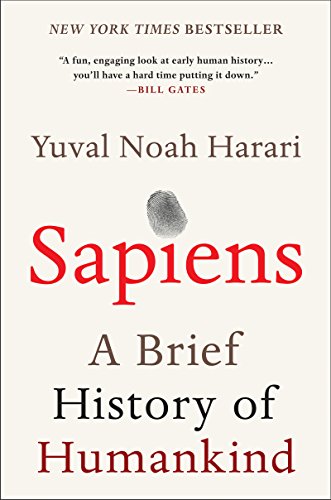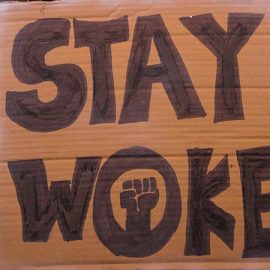

This article is an excerpt from the Shortform summary of "Sapiens: A Brief History of Humankind" by Yuval Noah Harari. Shortform has the world's best summaries of books you should be reading.
Like this article? Sign up for a free trial here .
Gender is a social construct. This is confusing because it has its basis in biology. When it comes to gender, what’s the relationship between societal norms and biology?
Gender is a social construct because, while it’s related to your sex, it’s not based on your biology. It’s influenced by how you fit (or choose to fit) the “man” or “woman” mold created by your particular culture’s myths about men and women.
We’ll cover the difference between “gender” and “sex” and look at how these distinctions have played out over the history of humanity.
Sex and Gender
There’s one hierarchy that is based in biology: the division of Sapiens into males and females.
In order to understand how gender is a social construct and which elements of the men/women divide are natural, or biological, and which are socially constructed, we need to understand the difference between “sex” and “gender.”
- Sex: A person’s sex, male or female, is determined by whether he or she is born with one X chromosome and one Y chromosome (male) or two X chromosomes (female). This is a biological or natural distinction.
- Gender: A person’s gender, man or woman, is related to his or her sex, but not strongly. Whether you are a man or woman (or non-binary or genderfluid) is not based on your biology. It’s influenced by how you fit (or choose to fit) the “man” or “woman” mold created by your particular culture’s myths about men and women. This is a social or cultural distinction.
Because what makes someone a man or woman is based on a culture’s myths, the definitions of “man” and “woman” have varied greatly across the world and over the centuries. “Masculine” and “feminine” are also subjective terms based on myth, not biology. Because people are biologically male or female but no one is inherently masculine or feminine, people are pressured to relentlessly prove their masculinity or femininity throughout their lives through rituals such as getting into fights, applying makeup, watching football, and wearing dresses. These are social constructions of masculinity and femininity.
While sex characteristics have remained constant over time, characteristics of masculinity and femininity have changed dramatically. This is one way you know that these characteristics are social rather than biological. For example, in the 18th century, King Louis XIV was the picture of virile masculinity, shown in an official portrait in a long curly wig, tights, high heels, and colorful, sumptuous fabrics. In contrast, a portrait of Barack Obama in a suit shows the ideal of masculinity in the 21st century: dark colors and simple, streamlined lines. This example indicates that gender is a social construct.
Natural Versus Unnatural Behavior
Many societies have used biological differences to argue that males and females should have certain rights and behave in certain ways. When an individual or group does something society doesn’t approve of, it’s called “unnatural.”
For instance, throughout history, society has held varying views on the naturalness of homosexuality. In today’s Greece, society holds that females should be sexually attracted to males and vice versa, and that this is a “biological reality” because humans evolved the ability to have sex to procreate, and homosexual relationships do not result in procreation. They believe homosexuality is unnatural. But cultures of ancient Greece saw homosexuality as natural and productive, a way to cement male bonds. Both Achilles in the Iliad and Alexander the Great had male lovers.
So who’s right? Modern or ancient Greece? One way to determine if a behavior is “biologically determined” or a “biological myth” is to remember that “Biology enables, Culture forbids.” From the perspective of biology, if something is possible, it’s natural. Conversely, if something is unnatural, it can’t exist in nature, making it impossible. In this way, biology enables. If something is forbidden, it’s the culture that’s doing the forbidding, not nature.
Biological Nature v. Theological Nature
When we argue that men shouldn’t have sex with other men because sex is meant to produce children, it sounds like we’re making a biological argument. But it’s actually a Christian one. Religion is part of culture. Again, we see that gender is a social construct.
Theologians believe that God created each of our organs for a specific purpose, and if we use them for any other purpose, that use is “unnatural.” Therefore, to a theologian, because God didn’t intend sex organs to be used for anything other than procreation, homosexuality is unnatural. This is “theological nature.”
But according to “biological nature,” God doesn’t create organs. Evolution does. And evolution doesn’t “create” an organ for a specific purpose. How animals use their organs changes throughout the history of their species.
For example, mouths evolved so organisms could get nutrients from their environments. If any other use of the mouth is “unnatural,” we have to ban kissing and speaking. But the fact that our “worm-like ancestors” didn’t kiss or speak doesn’t make these behaviors unnatural for us.
Similarly, many animals use sex for purposes other than procreation. For instance, chimpanzees use sex to form alliances and ease tensions. These uses aren’t unnatural simply because they weren’t the original purposes of sex. If biology makes these behaviors possible, they’re natural.
Male Dominance
Since the Agricultural Revolution, most cultures have valued males over females, regardless of how each culture defined men and women. Why? Is there a biological basis for this preference? Is gender really a social construct?
We can’t explain the prevalence of patriarchy throughout the world and history the same way we can explain other stratifications in society. Patriarchy is too universal to be explained by accidental events, or by the social construction of masculinity and femininity.
It’s more likely that the answer is biological, but researchers still have no idea what it is. Let’s look at three theories that suggest male dominance could be biological and is separate from the argument that gender is a social construct.
Theory #1: Males are naturally stronger, so they forced women to submit to them.
But there are problems with this theory. Females historically were forbidden from entering professions in law and religion, which require little physical work, but have worked in the fields and done the taxing household chores. Furthermore, there are plenty of women stronger than men, but they don’t have much more social power than weaker women. This pokes holes in this theory.
Further, the historical record shows little relation between physical strength and social power. Slaves in 19th-century Alabama were far stronger than their masters, yet they weren’t the ones in power. In fact, throughout history, the people with the least power in a society are the ones doing the hardest physical work, and those with the most power do the least physically demanding work.
Theory #2: Males are naturally more aggressive, so they fought wars and were able to seize power.
Similar to the problems with Theory #1, while aggressive men may make better combat soldiers, those in the ranks are usually not the ones in power. It’s the generals and politicians who have the power, and being a general or politician requires less aggressiveness and physical strength and more tact, organizational skills, and cooperation. It also requires the ability to view a situation from multiple perspectives. Being an aggressive person makes you a bad choice to run a war.
Theory #3: Males had to become competitive and aggressive as a reproductive strategy.
There are problems with this theory, too. Even if they were necessarily dependent, it’s not obvious why females would be dependent on males rather than other females. Females of many species, such as bonobo chimpanzees and elephants, form networks of females to collectively raise children. The societies of these species are also matriarchal rather than patriarchal.
Because females had to work together, they developed more refined social skills. Males, on the other hand, spent their time competing, and their social skills remain weak. We’d expect the most cooperative and socially skillful to be those in power. But history didn’t turn out this way, and we still don’t know why.
We know that gender is a social construct. We don’t know why history favored one sex over the other.
———End of Preview———

Like what you just read? Read the rest of the world's best summary of "Sapiens" at Shortform . Learn the book's critical concepts in 20 minutes or less .
Here's what you'll find in our full Sapiens summary :
- How Sapiens outlived and outlasted the 8+ other human-like species on Earth
- The 3 critical revolutions in human existence that led to our domination of the planet
- How much of what powers our world today is really just a shared mass delusion
- What the future of humanity might look like






